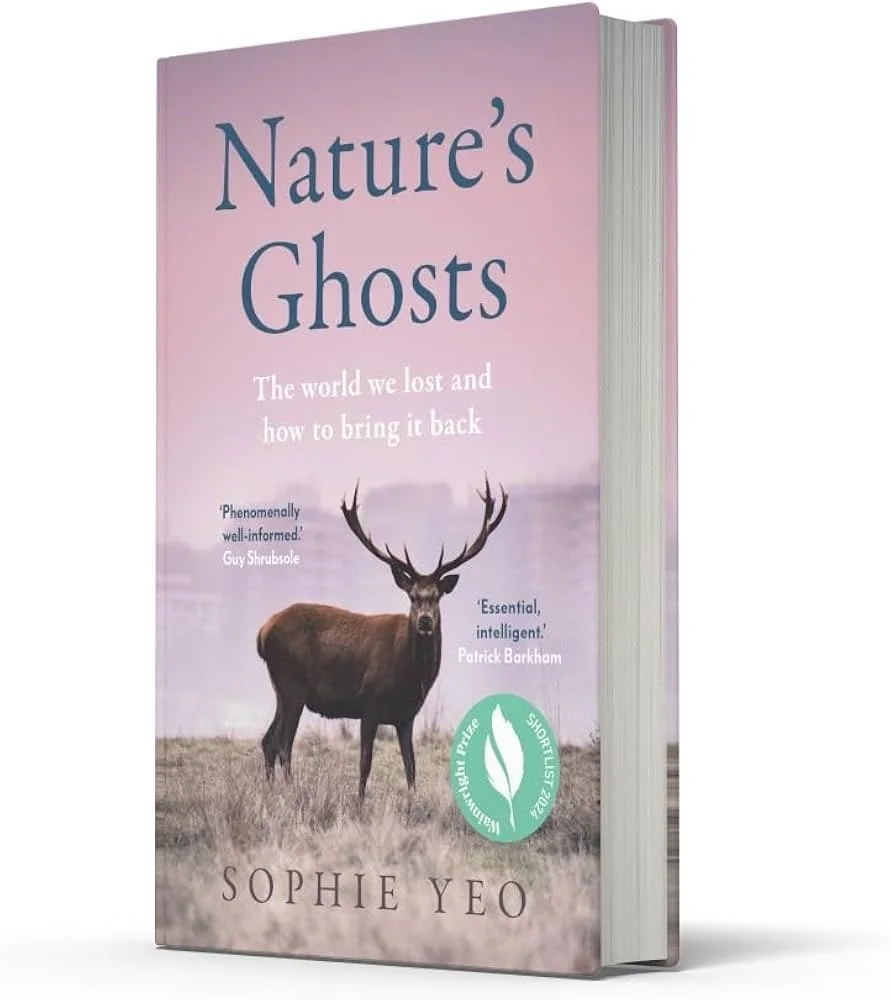Nature’s Ghosts - book review
This review was conducted using a review copy kindly provided by Sophie Yeo and her publisher.
What was the past like, in the days we never saw and never will? What did we miss—what sights, what abundances, what worlds and worldviews—by only a precious few millennia, if that? These are questions that have troubled the minds of naturalists and conservation-inclined thinkers ever since the first discovery of Deep Time, and the concept of extinction. Our world today is a depleted one: whether half-full or half-empty, it is, at any rate, halved, our gains in technology and prosperity counterbalanced by terrible ecological losses, ones we are still grappling to fully appreciate. With our understanding of past and present ecosystems changing rapidly as new discoveries and analyses come in, there is a pressing need for synthesis and communication beyond the specialist world—what does all this new data amount to? What does it mean? It is into this context that Sophie Yeo’s new book, Nature’s Ghosts, released in July 2024, steps in.
Its publisher describes the book as “[an examination of] how the planet would have looked before humans scrubbed away its diversity”—Nature’s Ghosts is this, but its scope is substantially more far reaching than this blurb might indicate. It is also an inquiry into methods of co-existence, today and in the recent past, into the myriad ways culture and religion have historically impacted (and still do impact) how we shape the landscapes around us, and how people struggle to come to terms with ongoing ecological transformations. If this all sounds extremely broad for a single, comparatively slim book, then it is, but Yeo handles the threads of her narrative deftly. Throughout its pages, she covers everything from traditional Finnish lake-fisheries to Roman history; ancient Cenozoic climatology to Welsh toponomy. Yeo’s topics range far and wide, but she never loses the central throughline.
As one example of this broad scope, in the chapter Holocene Farm, Yeo takes the readership on a fascinating deep dive through the history of Transylvania’s remarkably rich grassland flora, tracing it from the Ice Age until the present. In her exploration, Yeo highlights the crucial role of farmers in shaping and preserving this diversity, particularly through what she refers to as the ‘haylife’, wherein scythes, sheep and Medieval saints all coalesce to maintain a rich habitat, approximating in many ways the natural meadow-savannas of prior interglacials. Such praise of human stewardship should perhaps be caveated by the awareness that the problems it addresses—the deficit of abundant wild megafauna, the lack of natural disturbance—are themselves largely artifacts of earlier human depredations, but praise it remains all the same. It offers, if not a rejoinder, then an important nuance to the pervadingly negative assessments of human land-use that can tend to dominate palaeoecological and rewilding conversations.
At the same time, Yeo does not shy away from describing, at times in painful detail, the damages our ancestors have wrecked on the world around them. The introduction of early farming may have been a blessing for the wildflowers and other plants of the remaining Carpathian grasslands, but for their mammalian denizens—the tarpans, wild asses, lions, leopards and other large game—it marked their demise. Between the old, wild megafauna and the new domestic one, coexistence was not the rule.
‘Nuanced’ is a somewhat amorphous and at times platitudinous compliment, yet it seems nevertheless appropriate to invoke it here about Yeo’s book. Throughout its chapters, she repeatedly takes aim at oft-asserted, but poorly evidenced, sacred cows of much rewilding discourse, a notable example being the sizeable mythology erected around the ‘Caledonian Wildwood’, the ancient, primordial forest that supposedly spanned nearly all of Scotland until the comparatively recent past. Even so, her approach is gentle and earnest, not abrasive—deconstructive at times, where necessity demands, but without giving the impression of someone revelling in provocateurial debunking.
Of proper errors, I could detect precious few: at one point, Yeo refers to ancient field boundaries and plough headlands in the Polish-Belarusian wildwood of Białowieża as having been constructed by Romans, but this region was hundreds of miles beyond the Roman border, even at Rome’s height. The study cited refers to the Roman period, which was presumably misinterpreted as actual Roman occupation. Across the board, however, the level of research and synthesis on display is impressively comprehensive. A reader going in should, however, be clear on what the book is and is not. Nature’s Ghosts is not an encyclopaedic recounting of the various extinctions and ecological transformations the world has undergone in the last 100,000 years, nor is it a detailed scientific treatise. Yeo recounts many of the former (the average reader is sure to learn much), and she has certainly done her research, but the book’s genre is first and foremost an exploration and contemplation. In this, the author frequently indulges in a degree of personal anecdote and travel-description that could easily have become overdone. So many contemporary nature books sadly tend to collapse into little more than vaguely ecologically-themed autobiographies. Thankfully, Yeo avoids this pitfall, and where the book is personal, it is so in ways that consistently underpin her narrative or reflections in relevant ways.
In summary, I was very impressed with Nature’s Ghosts—in its broad scope and nuanced, at times almost subversive investigations, combined with its thorough basis in state-of-the-art research, it takes up an important space in the unfolding conversation on megafauna, rewilding and extinctions both Pleistocene and Holocene.

